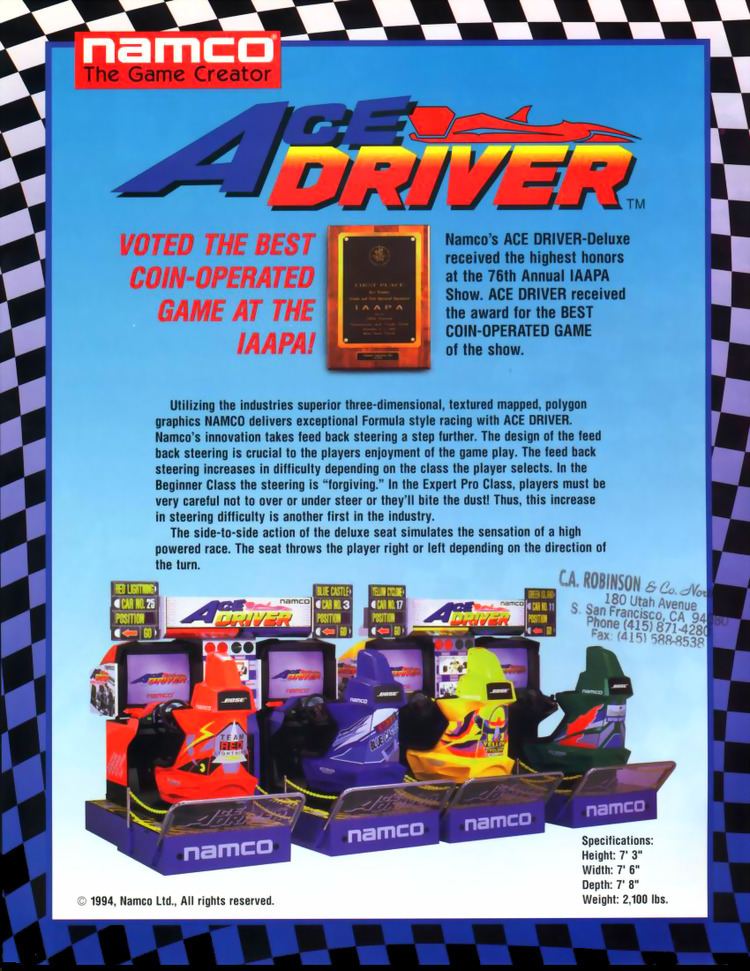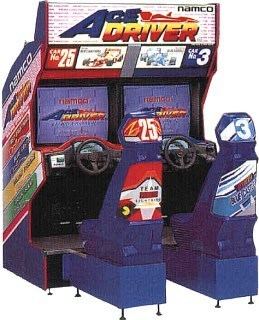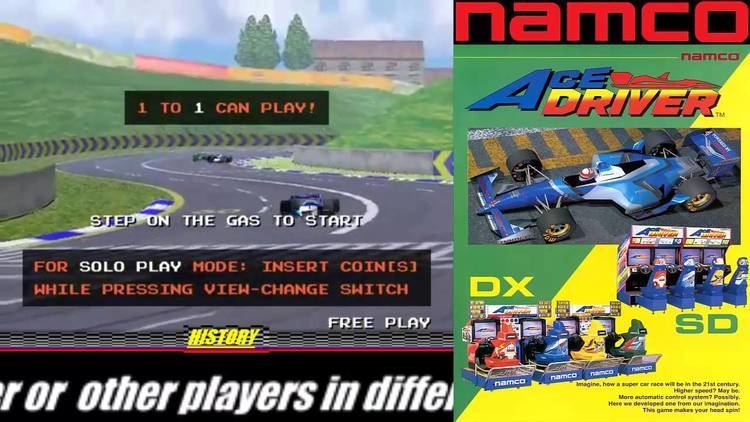Cabinet Upright and sitdown Publisher Namco | Composer(s) Hiroyuki Kawada Release date(s) JP: November 1994 Genre Racing video game | |
 | ||
Mode(s) Up to 8 players simultaneously Games Ace Driver: Victory Lap, Ace Driver | ||
Game of the day 1031 ace driver racing evolution namco 1994
Ace Driver (エースドライバー, Ēsu Doraibā) is a 3D racing arcade game released by Namco in 1994; it ran on the company's System 22 hardware, and in the game, players race in their Formula One-based cars on various circuits. It was followed by two sequels: Ace Driver: Victory Lap (1995) and Ace Driver 3: Final Turn (2008) - the former added two new tracks to the original, and the latter was a revival of the original.
Contents
- Game of the day 1031 ace driver racing evolution namco 1994
- Gameplay
- Reception and criticism
- Ace Driver Victory Lap
- Ace Driver 3 Final Turn
- References

Gameplay

At the start of the game, players can choose between Automatic or Manual Transmission (the former eliminates the need of the gear shift) and Beginner, Expert, or Expert Pro Race Class; in a multiplayer game, Expert Pro Race Class can only be played after all players select it. The cars are Team Red Lightning (cars 25 and 26), Scuderia Blue Castle (cars 3 and 4), Yellow Cyclone Racing (cars 17 and 18), and Green Island Motor Sports (cars 11 and 12) - and all eight of the cars carry advertisements for older Namco games, in a style similar to the Ridge Racer series.
Reception and criticism

Ace Driver received the award for the Best Coin-Operated Game of the 76th Annual IAAPA Show; it made extensive use of the CPU assist technique whereby a trailing player would be given a significant speed boost to allow them to catch up to the leading player. However, the speed boost continued for a short while after the losing player had overtaken the leader - leading to a tactic known as boosting, where a player would deliberately allow themselves to lose the lead, then during the last half of the last game lap would easily take back the lead with no hope of the other player catching up with them. Boosting also meant that straight skill races were difficult to have in the game given that the CPU assist would be continually changing the losing players' speed and position.
Ace Driver: Victory Lap

Ace Driver: Victory Lap (エースドライバー・ビクトリーラップ, Ēsu Doraibā - Bikutorī Rappu) is a 3D racing arcade game released by Namco in 1995, featuring more tracks and Formula One cars (which all, again, carry advertisements for older Namco games) than its predecessor, in a modern futuristic setting.
Ace Driver 3: Final Turn

Ace Driver 3: Final Turn (エースドライバー3・ファイナルターン, Ēsu Doraibā Surī - Fainaru Tān) is a 3D racing arcade game released by Namco in 2008; it is an official sequel to the past two games and is also a modern revival of the original Ace Driver title. The game uses mechanics borrowed from Ridge Racer 7 to ensure the cars can drift at very high speeds - and, much like its two precursors, it also contains a large amount of references to past Namco games (such as Taiko no Tatsujin, Tekken 6, and the aforementioned Ridge Racer 7).
